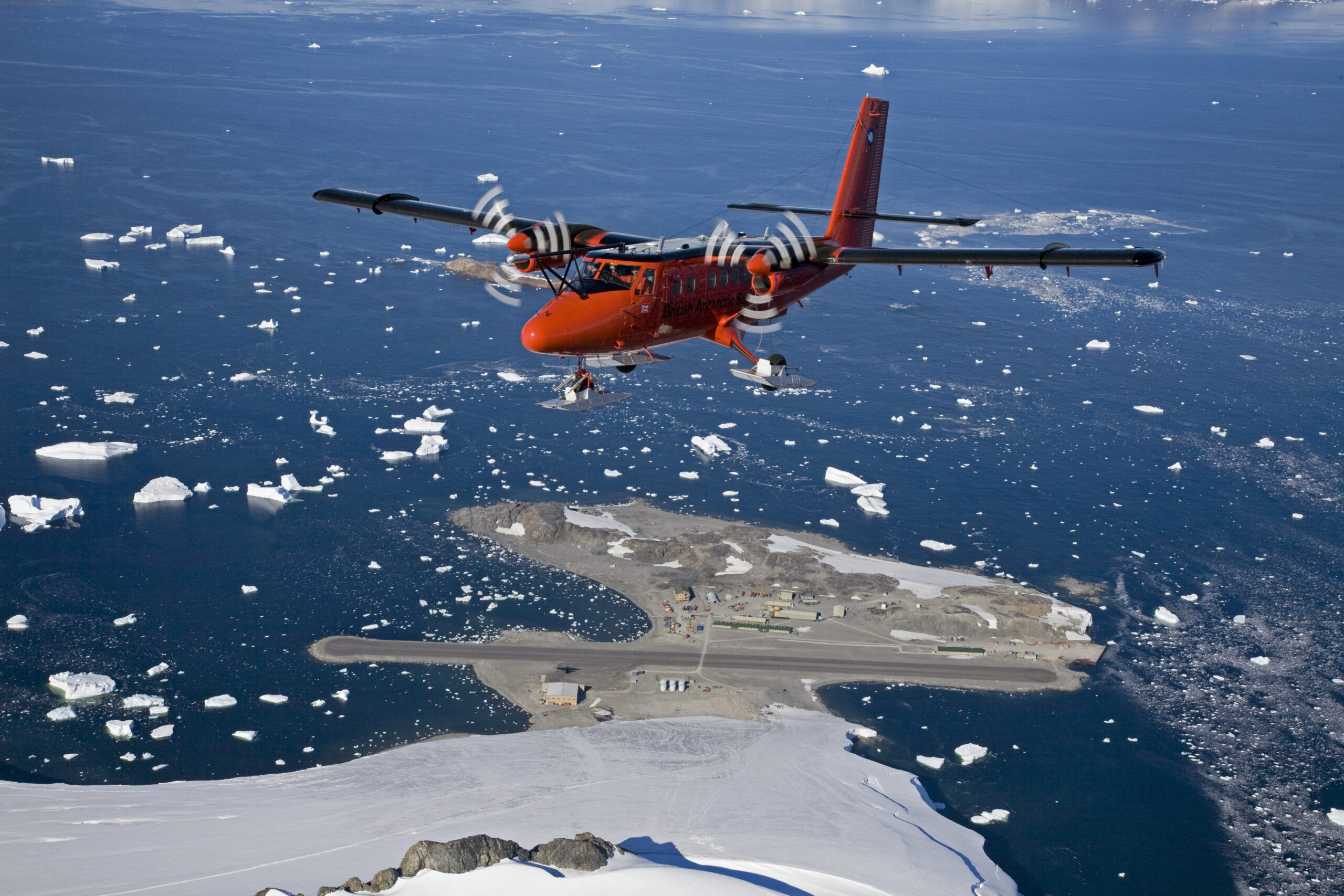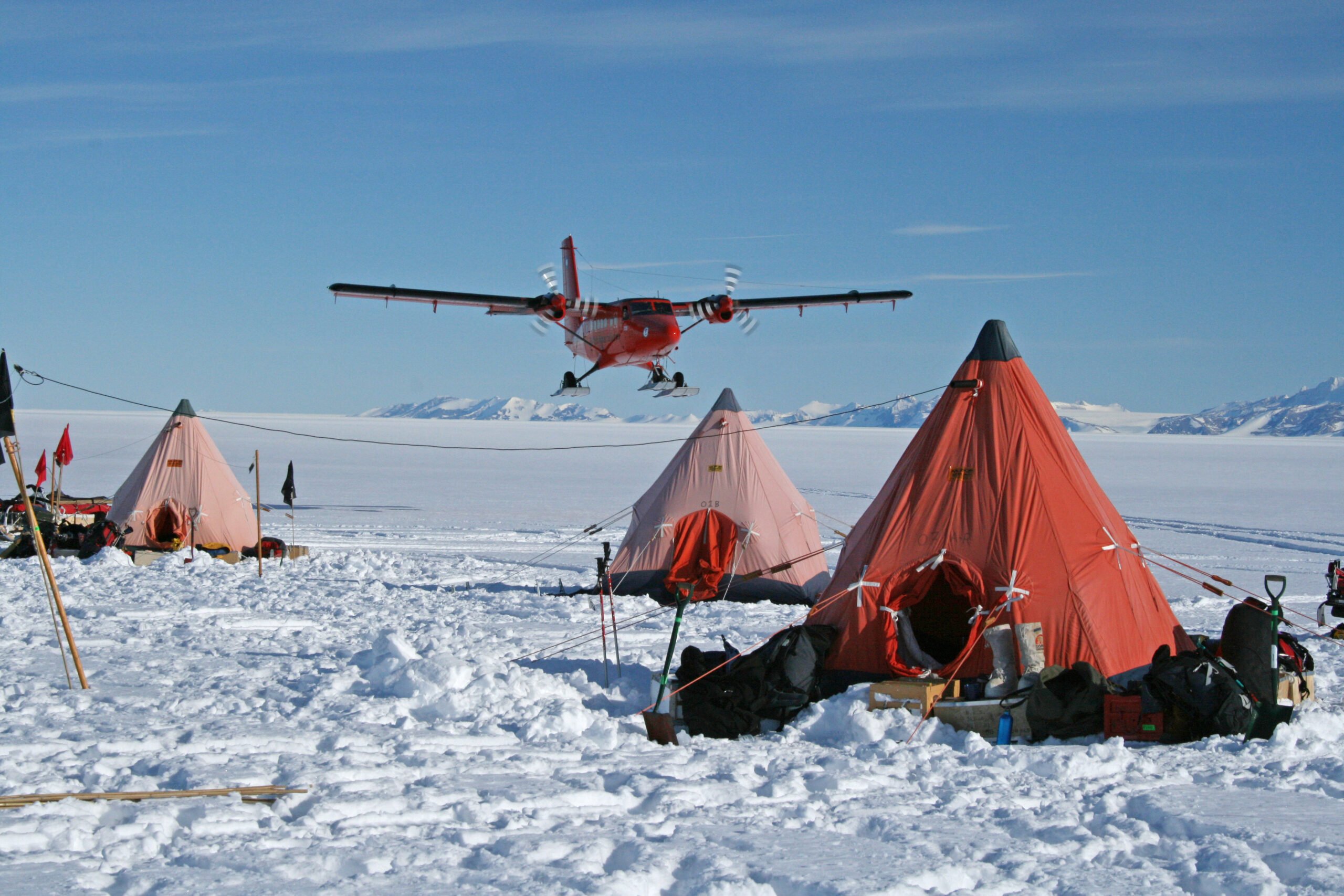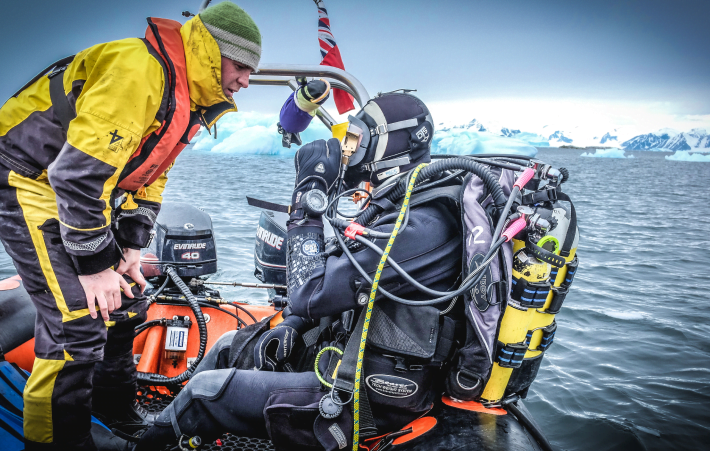About the journey
Come and join me as we fly South from Canada all the way to Antarctica. It’s an incredible journey, and there’s so much to explore on the frozen continent.
Vicky Auld, Pilot for British Antarctic Survey
Follow us on the journey of a lifetime as we travel all the way from Canada to Antarctica, on board one of our Twin Otter planes.

Your name could travel on board our Twin Otter – all the way to Antarctica!
We’ll be departing in October 2025. Together, we’ll travel to and around Antarctica, venturing into a world of icebergs, penguins and whales, and meeting the ordinary people who live and work in this extraordinary place.
Your name will be added to a memory stick that will travel on board one of our Twin Otters to Rothera Research Station in Antarctica, before being taken to our remote deep-field camp, Sky-Blu.
You’ll receive weekly interactive email updates (or airmail!) packed with stories, photos and videos from the journey, as well as a personalised digital ticket to Antarctica.
Visit the ‘Travel Journal‘ page to follow the journey and meet the crew as they travel over 8,000 nautical miles to a frozen world. There, you’ll see icebergs, penguins and whales, and meet scientists and teams working in and around Antarctica.



Twin Otters are small, nimble and reliable
What is the British Antarctic Survey?
We are scientists who study Earth’s frozen places: Antarctica and the Arctic!
British Antarctic Survey is the UK’s national polar research centre. That means we do the science, as well as running the UK’s five Antarctic research stations, five polar aircraft and our big red ship, the RRS Sir David Attenborough.
 Morag Hunter
Morag Hunter 

Our job is to uncover the secrets of Earth’s poles. We do this by studying all the connected parts of our planet – from the depths of the oceans under the ice, to the inner edge of space.
The team at British Antarctic Survey has been living and working in the extremes of Antarctica and the Arctic for over 60 years. Our scientists have found important evidence about climate change hidden in ancient Antarctic ice, and discovered the hole in Earth’s ozone layer.
Today, we’re uncovering how fragile these frozen environments are in our changing world. We want to find out what changes in Antarctica and the Arctic could mean for people and animals living around the globe.
BAS has 4 x Twin Otter aircraft that deploy people into the deep field

 Steve Gibbs
Steve Gibbs Divers at Rothera Research Station, Antarctica
Meet the planes
Say hello to our five red polar planes! We have four Twin Otters – small, nimble and reliable planes that are designed for remote environments and can be kitted out with all sorts of exciting science equipment.
We also have a Dash-7 plane. This is our logistics plane, used to move people and cargo to and from Rothera Research Station, and Sky-Blu field camp. During the Antarctic summer, the Dash-7 makes regular flights to and from the Falklands – the 1,900km journey can be completed in five hours.

The planes in numbers
Twin Otter fact file
Wing Span
19.8m
Length
15.7m
Engines
Twin turbo prop
Take-Off Weight
5,670kg
Range
1,435km
Maximum Speed
160 knots
Complement
Pilot + 4 crew
Altitudes
<114ft to 16,000ft
Dash-7 fact file
Wing Span
28.4m
Length
24.5m
Engines
4 x turbo prop
Take-Off Weight
21,320kg
Range
4,000km
(1,500km fully loaded, with required fuel reserves)
Maximum Speed
230 knots
Altitudes
25,000ft

Did you know?
Twin Otters are often called a ‘bush’ aircraft because they’re designed for remote environments.
